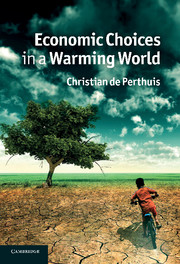Book contents
- Frontmatter
- Contents
- Acknowledgements
- Introduction
- 1 Climate risk
- 2 Some like it hot: adaptation to climate change
- 3 Building a low-carbon energy future
- 4 Pricing carbon: the economics of cap-and-trade
- 5 Intensifying agriculture to safeguard forests
- 6 The price of carbon: the economics of projects
- 7 Macroeconomic impacts: sharing carbon rent
- 8 International climate negotiations
- Conclusion
- References
- Appendix 1 Thirty key readings
- Appendix 2 Thirty key sets of figures
- Appendix 3 Greenhouse gas emissions around the world
- Glossary
- Index
Introduction
Manaus opera house
Published online by Cambridge University Press: 05 June 2012
- Frontmatter
- Contents
- Acknowledgements
- Introduction
- 1 Climate risk
- 2 Some like it hot: adaptation to climate change
- 3 Building a low-carbon energy future
- 4 Pricing carbon: the economics of cap-and-trade
- 5 Intensifying agriculture to safeguard forests
- 6 The price of carbon: the economics of projects
- 7 Macroeconomic impacts: sharing carbon rent
- 8 International climate negotiations
- Conclusion
- References
- Appendix 1 Thirty key readings
- Appendix 2 Thirty key sets of figures
- Appendix 3 Greenhouse gas emissions around the world
- Glossary
- Index
Summary
The first glimmer of dawn lights up the dark water that extends as far as the eye can see. The air is heavy with humidity. The silhouette of a ship anchored in the river stands out clearly. It is an oil tanker from the Urucu oilfield, 650 kilometres upstream, here to supply the refinery in the free-trade zone, where the leading companies of the Brazilian electronics industry are booming. The river is already bustling with local traffic. Small boats are unloading cargoes of bananas and manioc destined for the central marketplace, the metal arches of which extend along the river bank. Street vendors are beginning to spread out their merchandise on the pavement. The opera house is perched half way up the hill, its dome towering above the city. In a few hours' time, visitors will be crowding inside, admiring the stage and the gilt décor, comparable to anything the Paris opera has to offer.
We are in Manaus. Two million people live here, in the heart of the Amazonian rainforest, 1,500 kilometres from the mouth of the Amazon. In 1669, the Portuguese settlers established a trading post to signal their presence to the overly close Dutch explorers in Surinam. The town grew by leaps and bounds in the late nineteenth century. From 1890 to 1910 Manaus was the richest city in Latin America and one of the most prosperous anywhere in the world.
- Type
- Chapter
- Information
- Economic Choices in a Warming World , pp. 1 - 7Publisher: Cambridge University PressPrint publication year: 2011



